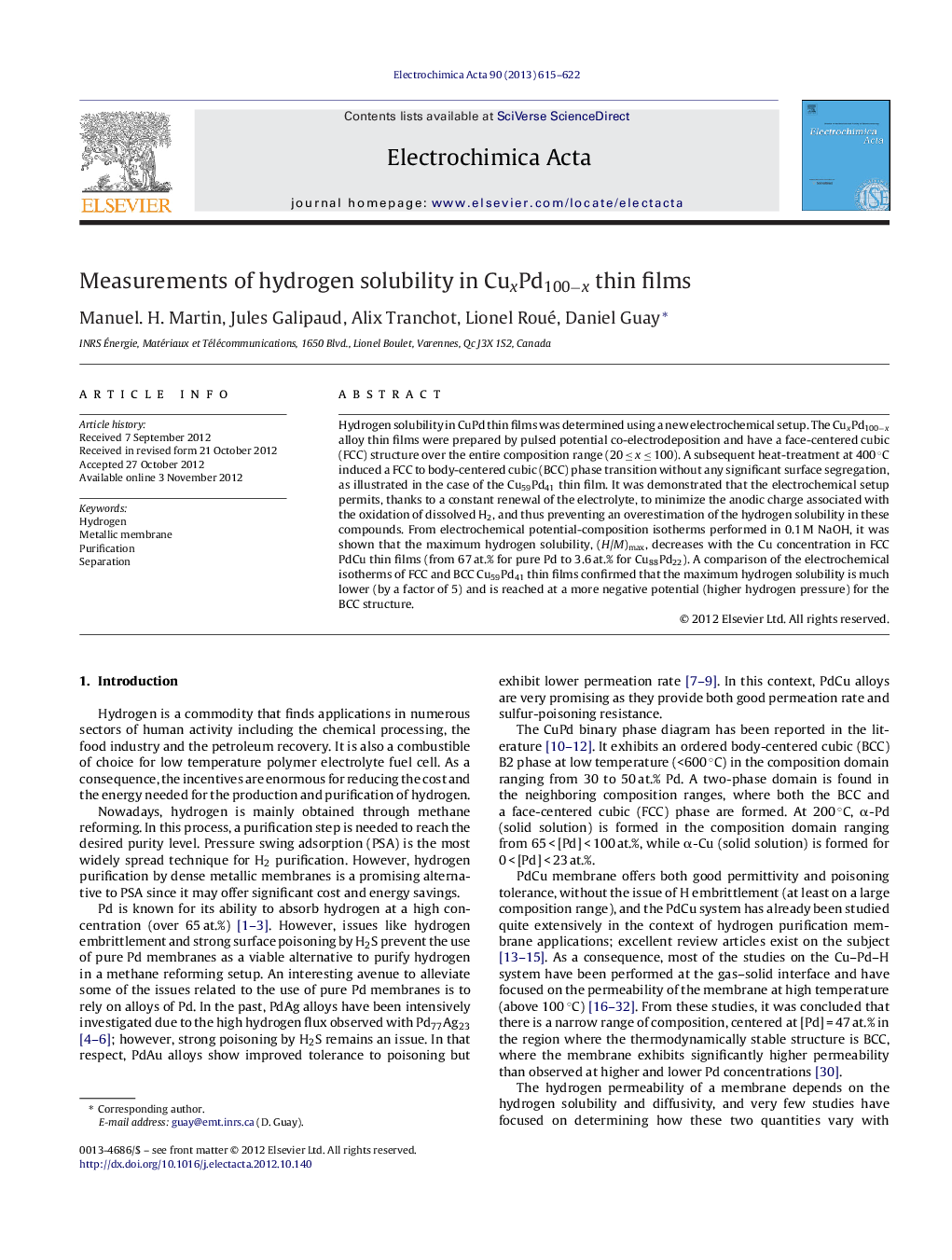| Article ID | Journal | Published Year | Pages | File Type |
|---|---|---|---|---|
| 187494 | Electrochimica Acta | 2013 | 8 Pages |
Hydrogen solubility in CuPd thin films was determined using a new electrochemical setup. The CuxPd100−x alloy thin films were prepared by pulsed potential co-electrodeposition and have a face-centered cubic (FCC) structure over the entire composition range (20 ≤ x ≤ 100). A subsequent heat-treatment at 400 °C induced a FCC to body-centered cubic (BCC) phase transition without any significant surface segregation, as illustrated in the case of the Cu59Pd41 thin film. It was demonstrated that the electrochemical setup permits, thanks to a constant renewal of the electrolyte, to minimize the anodic charge associated with the oxidation of dissolved H2, and thus preventing an overestimation of the hydrogen solubility in these compounds. From electrochemical potential-composition isotherms performed in 0.1 M NaOH, it was shown that the maximum hydrogen solubility, (H/M)max, decreases with the Cu concentration in FCC PdCu thin films (from 67 at.% for pure Pd to 3.6 at.% for Cu88Pd22). A comparison of the electrochemical isotherms of FCC and BCC Cu59Pd41 thin films confirmed that the maximum hydrogen solubility is much lower (by a factor of 5) and is reached at a more negative potential (higher hydrogen pressure) for the BCC structure.
